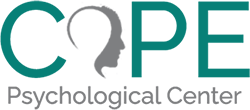Cognitive Distortions Don’t Tell the Truth, CBT Helps You Find It
Cognitive distortions can quietly wreak havoc on your peace of mind. These mental habits twist reality, fuel anxiety, and drain your confidence. Most people use them without realizing it, but learning to spot and shift them is a total game-changer.
Cognitive Distortions: Why We Think This Way
Our brains are busy. Constantly sorting, filtering, and reacting to incoming information. To make this process faster, the brain takes shortcuts. Some of those shortcuts help us avoid danger or stay efficient. Others, especially the distorted ones, end up making things worse.
When stress hits, the brain leans hard on its mental filters. You might tell yourself, This always happens or I’m such a failure, even when it’s not accurate. These thoughts can feel convincing. But they’re not objective, they’re habits formed over time, usually to cope with discomfort.
Rumination is part of cognitive distortions too. That habit of running the same worries on repeat, hoping a solution will suddenly appear. It might seem productive, but most of the time, it’s like spinning your wheels in a ditch. You end up digging deeper without getting anywhere.
Everyone gets stuck in these patterns now and then. But when they become a regular way of thinking, they start to shape how we feel, act, and relate to others.
What Cognitive Distortions Look Like
Cognitive distortions are like mental funhouse mirrors. They exaggerate, shrink, or twist reality into something that makes you feel worse. Some of the most common ones include:
- All-or-nothing thinking: You’re either a total success or a total failure. No in-between.
- Mind reading: You assume others are thinking badly of you, even without evidence.
- Personalizing: You blame yourself for things you didn’t control.
- “Should” thinking: You pressure yourself with rigid expectations. I should be more productive. I should have known better.
- Filtering: You only focus on what went wrong and completely ignore what went right.
- Overgeneralizing: One bad experience becomes proof that every situation will turn out the same.
- Magnifying and minimizing: You blow problems out of proportion and downplay your strengths.
- Fortune telling: You predict the worst and assume it’s inevitable.
- Comparison traps: You judge your worth based on someone else’s highlight reel.
- Catastrophizing: A small issue becomes a disaster in your mind.
- Labeling: One setback turns into a sweeping judgment of your character.
- Disqualifying the positive: You succeed, but chalk it up to luck.
- Emotional reasoning: You treat feelings as facts. If you feel unlovable, then it must be true.
These patterns often overlap and gang up on you. One leads to another, and before you know it, you’re tangled in a whole narrative that doesn’t even match what’s really happening.
Why Emotional Reasoning Gets Tricky
This one deserves its own spotlight. Emotional reasoning is when you let your feelings become your version of reality.
If you feel scared, you might assume you’re in danger. If you feel lonely, you might decide nobody likes you. If you feel insecure, you might believe you’re failing, even if all signs point otherwise.
This kind of reasoning often joins forces with other cognitive distortions. You feel nervous, so you predict failure. You feel ashamed, so you personalize every mistake. It’s sneaky, and it’s powerful. But it’s also reversible.
How to Challenge Cognitive Distortions
The first step is noticing them. You can’t change what you don’t catch. Start by slowing down the moment you feel anxious, defeated, or tense. Ask yourself: What am I telling myself right now?
Then try one or more of these approaches:
Check the Thought
Ask:
- What’s the evidence for and against this thought?
- Is this fact or feeling?
- Am I jumping to conclusions?
- What would I say to a friend in this situation?
Reframe the Narrative
Instead of I’ll never get this right, try I’ve made progress, and I’m still learning.
Instead of Everyone thinks I’m annoying, try I’m not in their heads, and I don’t have to be perfect.
It’s not about blind optimism. It’s about balance. Fairness. Breathing room.
Track the Triggers
Notice when these cognitive distortions show up most. Is it when you’re tired? Under pressure? After a mistake? Write down a few recent examples. This kind of pattern spotting helps you prepare and respond more skillfully next time.
Test the Theory
Say your mind is predicting disaster. Ask yourself: What’s the worst-case scenario? Then ask: How would I handle it? Often, the fear shrinks once you realize you could cope if needed.
Practice Self-Compassion
This isn’t about perfection. Everyone slips into old mental loops now and then. But each time you pause and reframe, you’re building a better habit. Progress, not perfection.
How Support Helps
You don’t have to do this solo. Therapists and coaches are trained to spot these patterns and help you shift them. They offer guidance, accountability, and a neutral lens.
How CBT Helps Untangle Cognitive Distortions
Cognitive behavioral therapy, or CBT, is one of the most effective tools for challenging and changing cognitive distortions. It’s practical, structured, and grounded in the idea that your thoughts, feelings, and behaviors are deeply connected. Shift one, and the others often shift too.
With cognitive distortions, your mind is like a GPS that’s glitching, rerouting you through every worst-case scenario or sending you straight into a ditch of self-blame. CBT helps recalibrate that system.
One of the first things a CBT therapist will do to help with cognitive distortions is help you identify which patterns are tripping you up. Most people don’t walk around saying, “Ah yes, I’m catastrophizing right now.” Instead, they feel overwhelmed, ashamed, or defeated and don’t know why. CBT brings those underlying thought habits into the light.
Once those patterns are named, CBT gives you specific tools to work with them. This might include thought records, where you jot down a situation, the automatic thought that popped up, how it made you feel, and how accurate that thought actually was. That process alone can be eye-opening. You start to see how often your brain makes assumptions without facts.
Another core technique is “cognitive reappraisal.” Let’s say you’re stuck in black-and-white thinking after a job interview. I blew it. I’m never going to get hired. CBT teaches you to pause and ask, Is that true? Was it really that bad? What evidence do I have for or against that thought? Then you practice coming up with a more balanced version, like, Some parts went well. I stumbled on one question, but that doesn’t mean I failed entirely.
Over time, this kind of work retrains your brain to think more flexibly. Not irrationally positive, realistically. That’s the key. You’re not trying to convince yourself the world is sunshine and puppies. You’re aiming for accuracy, fairness, and compassion.
CBT also helps break the emotional reasoning cycle. When you feel anxious, your brain might say, If I feel scared, something bad must be happening. CBT teaches you to recognize that feelings aren’t always facts. They’re signals, but they don’t always point to truth.
Another big win with CBT is that it puts you in the driver’s seat. Instead of being run by old narratives or reactive emotions, you start making decisions based on the full picture. You slow things down. You respond instead of react.
And like any skill, the more you practice, the stronger it gets. The thoughts that once knocked you flat start to lose their punch. You bounce back faster. You stop believing every inner critic. You build mental habits that support your well-being instead of sabotaging it.
Ultimately, CBT helps you develop a healthier relationship with your mind. You’re not fighting your thoughts or pretending they don’t exist. You’re learning to listen, question, and redirect them when needed. That’s where real change begins.
Real Talk About the Impact
When you begin to loosen the grip of cognitive distortions, everything starts to feel a little more possible. You show up with more confidence. You recover faster from setbacks. You feel less like a victim of your own thoughts.
Life still has challenges. But you stop making them harder than they need to be.
Final Thought
Cognitive distortions are part of being human. But they don’t have to run the show. With practice and support, you can change the way you think, and change the way you feel, too.
Your Thoughts Don’t Have to Hold You Back
COPE Psychological Center can help you break free from cognitive distortions with compassionate, expert care. Reach out today.


